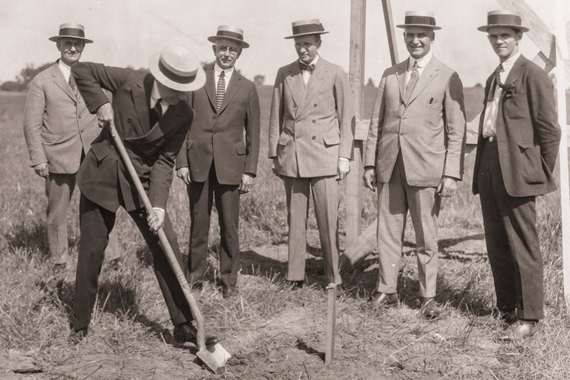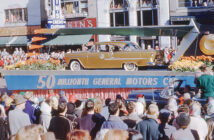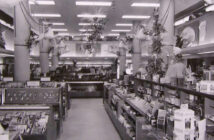
In 1910, Billy Durant was a millionaire; however, his life was anything but secure, due to his unbounded desire to conquer the automobile market and the reckless methods he employed to do so. Durant was a twice-made transportation mogul, first with the famous Durant-Dort Carriage Company in the twilight of the 19th century, and then with the turnaround of the Buick Motor Company in 1904. Billy’s latest project, the ‘General Motors Company’ had begun in 1908 with the consolidation of Buick and Oldsmobile under the GM umbrella, and had continued with the addition of over 25 different companies, including gems such as Cadillac and duds such as Heany Lamp, all in a matter of months. In 1910, this rapid expansion was brought to a sudden halt by a temporary drop in demand for the large cars that Buick and Cadillac were producing. The two companies that had been providing much-needed cash to their enormous parent were suddenly not providing cash, effectively choking GM’s windpipe. Months later, Durant lost executive control of the company he had built almost single-handedly. A bank trust was instituted and Durant was forced to the sidelines.
Undaunted, Billy immediately began a new car company. He bought out James Whiting’s Flint Wagon Works property and assets and readied them for car production. Billy’s plan was to build a new ‘General Motors’: a powerful company composed of departments that would build automobiles at every price point and would supply all of the pieces necessary for production in-house. Chevrolet was one of four different companies Durant created for this purpose. Between 1910 and 1913, however, various disasters with the other three companies pushed Billy to focus on Chevrolet exclusively. Louis Chevrolet was a famous early racecar driver, known for his daring driving and personal largess. Before the GM crash of 1910, Chevrolet drove for Buick, winning half of all automotive races in the U.S. He was also on Durant’s personal payroll, tinkering with a design that could compete with Henry Ford’s Model T. After General Motors, under control of the bank, decided to discontinue Buick’s least expensive car—the Model B—Durant knew that he had to break into the inexpensive-car market: a market that Ford was dominating with his “tin Lizzie.”
Louis Chevrolet did not feel that an economy car fit his public image, and after increasingly bitter feuds with Durant, he sold his share of the business, along with his name, to the phoenix-like Durant, who was rising again. In 1914, Durant launched two new Chevrolet cars: the Royal Mail and the Baby Grand, both priced under $900. Although these cars were not as cheap as the Model T, they were the only models under $1,000 featuring the revolutionary new self-starter (as opposed to the dangerous hand cranks) and electric lights as well as a valve-in-head engine. The “bowtie” emblem was becoming legendary. A year later, Durant announced that the new Chevrolet car would be called the 490, carrying all the features of the previous models, but with a price tag that matched its name. Consumers were amazed, and profits skyrocketed.
With the GM bankers’ trust fixed to expire in 1915, the stage was set for the largest coup ever forgotten in the corporate world: akin to, or perhaps the inspiration for, Bruce Wayne’s buyback of Wayne Enterprises in the hit movie, Batman Begins. Billy used Chevrolet as leverage against General Motors, and announced to the bankers that he had a controlling interest in the company. Although the fallout lasted for more than a year, by 1916 Durant had undeniable control of General Motors once again. His first act, like so many of his first acts in business, was acquirement. Billy’s new venture was the perfection of vertical integration: his conglomeration of various parts providers under an umbrella called United Motors provided stability for GM’s production. Consistent demand for the automotive parts suppliers and uninterrupted flow of parts to GM’s car manufacturing divisions smoothed out wild undulations in production.
In the years leading up to 1920, rapid growth and a high demand for automobiles hid the fact that the company was internally flawed, with a severe lack of centralized control and coordination. Several costly errors once again had the behemoth company stuttering on the brink of catastrophe. Lack of management, enormous debt and a dangerously volatile stock market were factors that eventually led to Durant’s final resignation from General Motors, the product of his great imagination and tireless work. Billy attempted to remain in the automobile market by starting a new company called Durant Motors, but it was a short-lived venture.
Billy Durant is perhaps one of the most overlooked corporate giants of the 20th century. His guiding role in the automobile industry is certainly unacknowledged: his ideas about production, distribution and marketing have defined the American market for over 100 years. Some may call his life turbulent, but not many can say that they took initiative in shaping their lives as fearlessly as W.C. Durant did his.







